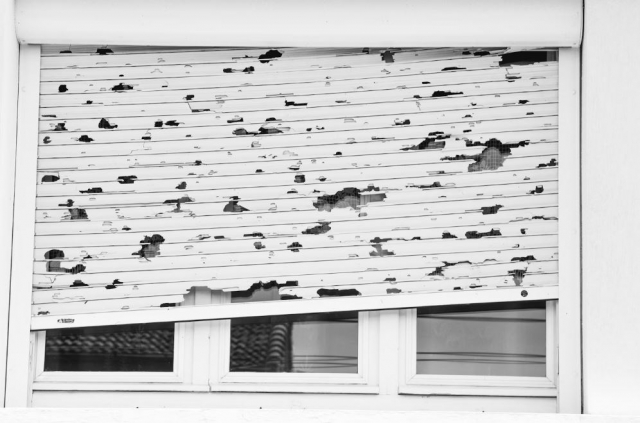The consequences of hailstones striking your property can extend beyond mere physical damage. It frequently initiates a convoluted web of insurance claims and potential legal disputes.
As homeowners grapple with the aftermath, many find themselves unprepared for the intricacies of the claims process. This is where a hail damage attorney can become an invaluable ally. From deciphering policy jargon to negotiating with insurers, the journey to fair compensation is fraught with challenges.
This blog post will cover essential components of insurance claims for hail damage that all property owners should be aware of. With this knowledge, you will be more prepared to handle claim disputes and achieve the settlement that you rightfully deserve.
The Perplexing Surge in Hail-Related Insurance Deception
The National Oceanic and Atmospheric Administration reported in 2023 that insurance damages from hailstorms average $1 billion. As a result of climate change, more frequent and powerful storms are expected, increasing the risk of hail damage in the years to come.
However, are you aware that hail damage claims have become controversial? The National Insurance Crime Bureau's report presents one such fraud. Frank Duffy and his late wife, Geraldine, residents of Colorado, experienced a roofing scam following a hailstorm.
A representative of East West Roofing, LLC, was paid in advance for the repair work. Despite receiving payment, the worker disappeared, resulting in financial loss and inconvenience for the Duffys.
What forces are driving this alarming trend? Sophisticated criminal networks have emerged as key players, systematically targeting storm-ravaged areas and manipulating repair estimates to their advantage.
This surge in deceptive practices underscores the critical importance of robust legal representation for legitimate claimants. How does this complex landscape affect honest property owners?
As per VandenBout Law, the intricate nature of hail damage claims often allows insurers numerous opportunities for ambiguity. They might understate damage assessments to attribute destruction to pre-existing conditions, such as natural deterioration or manufacturing defects.
Deciphering Your Insurance Policy
Insurance policies can be extremely difficult for policyholders to understand because of their complex language and intricate structure. However, in the aftermath of a hailstorm, comprehending these documents becomes paramount.
How do insurers define hail damage? Typically, they focus on visible destruction to your property's exterior, but nuances abound. Exclusions, those often-overlooked clauses, can significantly impact your claim.
Terms such as "cosmetic damage" or "pre-existing conditions" warrant particular scrutiny. Equally crucial is a thorough understanding of deductibles and coverage limits.
Many policyholders are unaware that hail-specific deductibles may differ from standard ones. Furthermore, the disparity between replacement cost and actual cash value might have a significant impact on the compensation amount.
By acquiring expertise in these aspects, you transition from being a simple policyholder to becoming a knowledgeable advocate. You enhance your chances to successfully negotiate the intricate landscape of hail damage claims.
Documenting the Aftermath
By June 2024, numerous US states had documented substantial hail damage caused by spring storms. Texas, Oklahoma, and Nebraska each saw significant devastation. The mayhem resulted in homeowners and companies enduring substantial financial losses amounting to millions of dollars.
These catastrophic events underscore a critical truth: in the aftermath of such destruction, time becomes an invaluable asset.
Evidence of hail damage can be fleeting, often disappearing within days. Swift action is paramount to capture this crucial data. But what constitutes compelling evidence?
High-resolution photographs and videos of damaged areas are indispensable. Pay particular attention to impact marks on soft metals, such as downspouts or air conditioning units. These serve as invaluable "hail maps," providing forensic evidence of storm intensity.
How can technology augment your documentation efforts? Consider employing drone photography for a comprehensive aerial survey of your property. These unmanned aerial vehicles can capture detailed imagery of otherwise inaccessible areas, such as steep rooflines.
Additionally, meteorological data from weather radar and hail tracking services can corroborate your claim. Some insurers now accept data from smart home devices, like impact-sensing shingles, which provide real-time hail strike information.
Remember, meticulous documentation isn't just about quantity. It's about creating a narrative that demonstrates the causal link between the hailstorm and the damage to your property. This evidence forms the bedrock of your case, tipping the scales in your favor during negotiations or litigation.
When Does Legal Counsel Become Imperative?
While not every insurance dispute warrants legal intervention, certain scenarios demand the expertise of a hail damage attorney. What red flags should alert you to seek legal counsel? Consider the following situations.
Has your insurer issued a blanket denial of your claim, citing reasons you deem unjustifiable? This warrants scrutiny. Are you facing a lowball offer that grossly undervalues your property damage? Such tactics often necessitate professional intervention.
Have you encountered inexplicable delays or communication breakdowns during the claims process? Legal pressure may expedite resolution. Most alarmingly, has your insurer exhibited signs of bad faith practices, such as refusing coverage without valid justification or conducting a perfunctory investigation?
The temporal aspect of hail damage claims presents unique challenges. Many policies impose stringent reporting deadlines, which can prove problematic for latent damage. Consider a roof leak that manifests only during subsequent rainstorms.
According to Insurance Journal, a landmark Colorado Supreme Court ruling has tilted the scales in favor of homeowners. It has asserted that insurers cannot solely cite delayed reporting as grounds for denial unless it materially impairs their investigation.
This judicial interpretation prioritizes policyholder compensation over procedural technicalities. However, dissenting opinions express concern about potential impacts on insurance pricing. Proposed solutions include differentiated reporting deadlines for overt versus concealed damage and encouraging proactive property inspections by homeowners.
FAQs
Q1: How does climate change impact hail damage claims?
A: Climate change amplifies the frequency and intensity of hailstorms, potentially increasing insurance claims. This phenomenon necessitates enhanced vigilance from property owners and may influence insurance policies, coverage limits, and premiums in storm-prone regions.
Q2: What role do drones play in documenting hail damage?
A: Unmanned aerial vehicles provide comprehensive aerial surveys of property damage. These devices capture high-resolution imagery of inaccessible areas, such as steep rooflines, offering invaluable evidence for insurance claims and potential legal proceedings.
Q3: How can smart home devices assist in hail damage claims?
A: Certain insurers now accept data from impact-sensing shingles. These innovative devices provide real-time hail strike information. They offer objective evidence of damage occurrence and intensity, thus strengthening the validity of insurance claims.
The landscape of hail damage insurance claims extends beyond individual property concerns. It reflects broader issues of climate resilience, technological integration in insurance, and the evolving legal framework governing policyholder rights.
As extreme weather events become more frequent, understanding these claims becomes crucial. This is true not only for property protection but also for community resilience and economic stability. This knowledge empowers stakeholders to navigate the complex interplay between environmental challenges, insurance practices, and legal protections.






